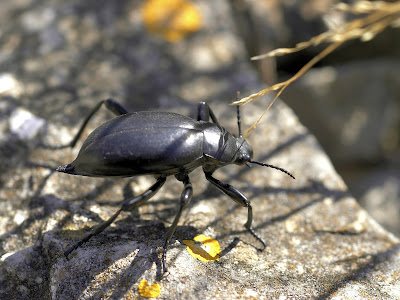Belongs within: Coleoptera.
Contains: Coccinellidae, Endomychidae, Corylophidae, Latridiidae, Cerylonidae.
The Coccinelloidea are a diverse clade of beetles supported by molecular phylogenetic analyses (McKenna et al. 2015).
<==Coccinelloidea [Tridigitati] MW15
|--+--+--Coccinellidae MW15
| | `--+--Endomychidae MW15
| | `--Akalyptoischion [Akalyptoischiidae] MW15
| | `--A. atrichos Andrews 1976 B14
| `--+--Sphaerosoma [Alexiidae] MW15
| | `--S. carpathicum (Reitter 1883) B14
| `--+--Corylophidae MW15
| `--+--Merophysiidae [Holoparamecinae, Merophysiinae] RD77
| | |--Holoparamecus depressus MW15, LB91
| | `--Merophysia RD77
| `--Anamorphinae MW15
| |--Bystus MW15
| `--Micropsephodes lundgreni Leschen & Carlton 2000 B14
`--+--Latridiidae MW15
`--+--Murmidius [Murmidiinae] MW15
| `--M. ovalis LB91
`--+--+--Cerylonidae MW15
| `--Discolomatidae [Notiophygidae] MW15
| |--Parmaschema basilewskyi John 1955 B14
| |--Aphanocephalus bimaculatus LB91
| `--Fallia MW15
`--Bothrideridae MW15
|--Anommatus [Anommatinae] LB91
| `--A. duodecimstriatus LB91
`--Bothriderinae B14
|--Bothrideres taeniatus B70
|--Pseudobothrideres conradsi Pope 1959 B14
|--Ascetoderes aequinus LB91
|--Deretaphrus LB91
`--Dastarcus confinis LB91, M86
*Type species of generic name indicated
REFERENCES
[B14] Bouchard, P. (ed.) 2014. The Book of Beetles: A lifesize guide to six hundred of nature's gems. Ivy Press: Lewes (United Kingdom).
[B70] Britton, E. B. 1970. Coleoptera (beetles). In: CSIRO. The Insects of Australia: A textbook for students and research workers pp. 495–621. Melbourne University Press.
[LB91] Lawrence, J. F., & E. B. Britton. 1991. Coleoptera (beetles). In: CSIRO. The Insects of Australia: A textbook for students and research workers 2nd ed. vol. 2 pp. 543–683. Melbourne University Press: Carlton (Victoria).
[M86] Macleay, W. 1886. The insects of the Fly River, New Guinea, "Coleoptera". Proceedings of the Linnean Society of New South Wales, series 2, 1 (1): 136–157.
[MW15] McKenna, D. D., A. L. Wild, K. Kanda, C. L. Bellamy, R. G. Beutel, M. S. Caterino, C. W. Farnum, D. C. Hawks, M. A. Ivie, M. L. Jameson, R. A. B. Leschen, A. E. Marvaldi, J. V. McHugh, A. F. Newton, J. A. Robertson, M. K. Thayer, M. F. Whiting, J. F. Lawrence, A. Ślipiński, D. R. Maddison & B. D. Farrell. 2015. The beetle tree of life reveals that Coleoptera survived end-Permian mass extinction to diversify during the Cretaceous terrestrial revolution. Systematic Entomology 40 (4): 835–880.
[RD77] Richards, O. W., & R. G. Davies. 1977. Imms' General Textbook of Entomology 10th ed. vol. 2. Classification and Biology. Chapman and Hall: London.













